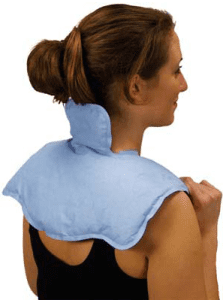 Medical View of Chronic Pain and Weather
Medical View of Chronic Pain and Weather
Surprisingly, there is scant scientific research and evidence linking seasonal changes to pain. Of course, this development goes against the grain of theories that suggest drops in barometric pressure lead to increased joint inflammation or even propose that patients with chronic joint pain can predict changes in the weather (i.e. temperature drops, rain, etc.) based on how their joints are feeling.
While many medical professionals may be hesitant to confirm such statements as truths, what is generally agreed upon is that patients do see their doctors about symptoms related to weather changes.
For example:
- Modulating factors like cold, damp weather, “stress”, and overexertion have been noted by patients whose symptoms of fibromyalgia (generalized pain, stiffness, fatigue, non-restorative sleep) recently worsened.
- Patients with osteoarthritis have noted swelling and warmth in one or more joints particularly during weather changes that may be related to cooling of the air and drops in barometric pressure.
Even if the scientific relationship between the weather and chronic pain is not fully understood, what is known is that patients may try different non-surgical treatments to alleviate their symptoms.
Counterbalancing the Cold with Some Heat
Known for decreasing stiffness, increasing blood circulation and promoting the healing process, heat therapy may be a potential ally for patients with chronic pain during the fall and winter.
For patients whose joints may feel painful, sore or stiff with the onset of recent cold weather, consider these suggestions:
-
 Apply a hot pack, warm towel or heating pad to the painful area. Simply doing this for 20 minutes at a time may be enough for temporary pain relief.
Apply a hot pack, warm towel or heating pad to the painful area. Simply doing this for 20 minutes at a time may be enough for temporary pain relief. - Utilize heat wraps. Available in most grocery stores/pharmacies, heat wraps can provide warmth for joint-related back pain and other symptoms for up to 8 hours at a time.
- Try water therapy. Some patients may experience pain relief by swimming in an indoor, heated pool a few times per week, or utilizing a whirlpool, perhaps at a local community center or health club. Taking a hot shower may be an alternative solution for other patients.
- Stay active rather than hibernating. A lot of people limit their activities in the winter because of the cold weather. Such immobility is not good for the spine and joints. Rather, maintaining a regular exercise program promotes a healthy spine.
While the new season may bring added stress to some chronic pain sufferers, keeping these tips in mind and having a positive outlook (after all, the fall does bring wonderful scenery and football) may help patients minimize pain.
Source: www.spine-health.com








